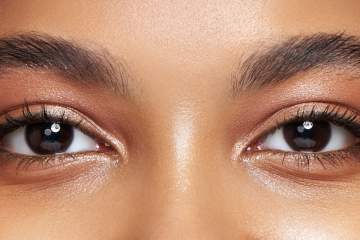The form of the eye, its structure, and its powers, call forth fresh admiration as they successively claim our attention.
The Form
Its form affords the greatest resistance to external violence, and is most perfectly adapted for the fulfilment of the function of vision, as it allows of the continued exercise of its powers during the act of turning the eye, which could have been accomplished in no other way.
The Shape
Had its shape been different, it would have been less strong, unless made up of heavier materials ; and its glance could not, as now, have trayed at will ” from heaven to earth, from earth to heaven,” reading, near and far, the ever present lessons of light and beauty.
The Protection Even bone would have been a less perfect protection for the delicate internal parts than is the light tissue which forms the framework of the globe,—so yielding in its elasticity, yet so firm in its tough resistance.
In front, we find the strong white membrane, the sclera, modified to a transparent structure, the cornea, an equal safeguard against intruding enemies, and giving unimpeded entrance to light alone.
The Protection
Even bone would have been a less perfect protection for the delicate internal parts than is the light tissue which forms the framework of the globe, so yielding in its elasticity, yet so firm in its tough resistance.
In front, we find the strong white membrane, the sclera, modified to a transparent structure, the cornea, an equal safeguard against intruding enemies, and giving unimpeded entrance to light alone.
The Inner Workings
The nerves and blood-vessels, which, if placed in it, would have weakened the fibrous envelope, are included in another interior membrane, the choroid ; and within these is spread out the delicate nervous perceptive tissue, the retina, to which all the other parts are auxiliary and subservient.
Upon this images of all visible Nature are pictured: from it the fleeting impressions are telegraphed to the brain, and we are conscious that we see.
The Eyeball
But, to this function of seeing, other conditions are essential. The eyeball, the most perfect of optical instruments, must have its focal powers completed by the presence of refracting substances, the aqueous and vitreous humors and crystalline lens, which at the same time give form to the globe, and by their quiet pressure keep the nervous tissue expanded, and in readiness for its appropriate work.
By a combination of these refracting agents, the rays emanating from objects are transmitted and concentrated so as to render the image upon the retina distinct and well defined.
The Door Keeper
Furthermore, the passage of rays through these transparent media is regulated by a curtain, the iris, of which the circular opening, the pupil, expands and contracts according to the amount of light ; the movements of the curtain being self-impelled, without any effort of the will.
Thus, contracting in a strong light, it protects the retina from being injured by the glare ; and, expanding where the light is dim, it allows a larger number of rays to enter, so as to form a clear image.
Like the choroid, this curtain is lined with dark coloring-matter, not only to absorb any irregularly refracted rays, and prevent reflections from side to side within the globe, but to exclude the entrance of light through the*coats of the eye, except in the direction most suitable for refraction, through the cornea and pupil.
The Optics
To complete the noble endowment of capacities, the eye has yet another power. It is a self-regulating optical instrument. We may turn our eyes from the printed page to gaze at a distance, or withdraw them from space to fix them upon a minute atom ; and the eye adapts itself instantly to each of these uses.
By means of a circle of delicate fibers, so small that till lately their existence and uses were unknown – the ciliary muscle – the convexity of the crystalline lens can be increased, and its focal power varied; and thus, without conscious effort, the eye may contemplate the glories of the firmament, or catch the first flitting expression of an infant’s love, or explore the mysteries of microscopic existences.
The Eyes
Finally, we have two eyes ; not merely that we may be doubly provided against the danger of accidental loss of the inestimable privileges of vision, but to enable us to estimate the size, form, and distance of objects with more correctness than we could with one eye alone.
With two eyes, the impressions made on each mutually correct one another, and combine to convey to the brain perceptions of the properties of things which could otherwise have been gained by the touch alone.
That is, my friend, how I look at our eyes.


